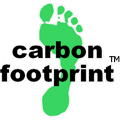Vacation Footprint
Tips to reduce your vacation holiday footprint
As you head off on summer vacation - think about the impact you are having getting to & in your destination location.
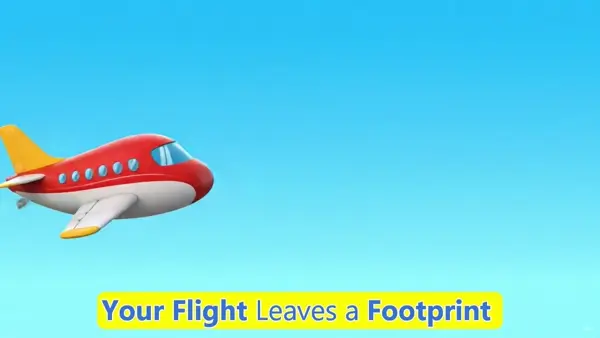
The World Travel and Tourism Council (WTTC) has highlighted the 'real need for people to recognise their impact and how much water, waste and energy you should consume compared to the local population of your destination location'. Read more from the journal, Nature - Climate Change, on the impact of tourism on the carbon footprint of the planet.
Remember, the sustainable choices we make can have a real impact on the environment around us.
|
Did You Know … ? A family of 4 flying (round trip) from Des Moines Iowa to Disney World Florida emits 2 tonnes CO2 A family of 4 flying (round trip) from Los Angeles California to Cancun, Mexico emits 2 tonnes CO2 A family of 4 flying (round trip) from Houston, Texas to London, England emits 7 tonnes CO2 Calculate and Offset your Vacation Footprint |
Travel by Train - USA
Flight emissions make up the majority of your vacation carbon footprint so why not look into travelling around the US by train?
Amtrak has a large network of train routes connecting all major US cities and offer sleeping accommodation, room for luggage and meals on board. Instead of flying from one end of the US to the other why not incorporate the journey into your vacation? Vacations by Rail offer tours of the US by rail allowing you to enjoy the scenery that you would miss from 33,000 feet in the air.
Travel by train - Europe
Instead of flying across Europe why not travel there by public transport? Europe has an extensive rail network meaning that almost every destination is accessible by train – some like Disneyland Paris even have their own stations. Not only will this reduce your carbon emissions but it will also give you the opportunity to see some of the spectacular scenery that Europe has to offer.
Interrail offer a wide range of train passes covering single countries to the entire of Europe. An app is available showing you all train departure times and lets you plan your journey and book reservation tickets.
A family of 4 travelling by train from Paris to Barcelona will create 0.01tonnes of CO2 compared to flying which would create 0.24 tonnes of CO2
If you have to Fly - Offset your carbon
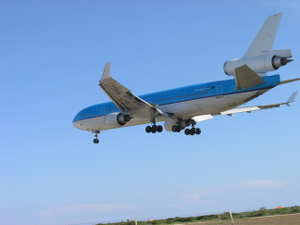
Flights are the main source of carbon emissions in your vacation footprint. If you have to fly, here are some practical tips that you can use to reduce the overall emissions of the flight:
- Travel light - most of the clothes we take on holiday 'just in case', but seldom if ever do we need them. By sticking to just what you need, you will be reducing the payload of the plane, fuel usage and carbon emissions
- Travel 'non stop' routes - some flights are labelled 'direct', that often means that the plane can make multiple stops en route to your final destination. The extra take-offs and landings will add to the carbon footprint
- Use electronic ticketing where possible - avoid the emissions associated with print out of tickets by holding them on your phone
Look at the different airlines – how modern is their fleet? If they are operating new generation aircraft like the Airbus A380 carbon emissions will be up to 20% less than older style jets.
Carbon Offsetting is used to compensate unavoidable carbon emissions by funding an equivalent carbon dioxide savings across the Globe. Carbon Footprint Ltd provides fully certified carbon offsetting for individuals & families looking to offset their carbon emissions. Please see Our Carbon Offset Projects for further information.
Calculate & offset your flight emissions using our Carbon Calculator.
Walk or Cycle
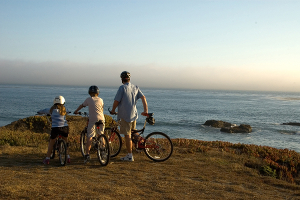
Once you have arrived at your holiday destination, walk and cycle whenever possible especially for short journeys. If you are unable to bring your own bike, look into hiring bikes at your location. Not only do cycling and walking have no carbon emissions associated with them but they also are great for improving health and well-being and most importantly are good fun for the entire family!
If you are interested in walking trails in the US, American Trails has over 1100 trails covering all states on its website for you to enjoy.
If you are travelling to Europe this summer there is an extensive cycle hire network. Eurovelo has information on 17 long distance cycle routes which could be incorporated into a cycling holiday while Sustrans have a full list of cycling routes in the United Kingdom.
Consider a camping vacation
Camping is a great example of low carbon accommodation. There are a wide variety of campsites in the US, Europe and the rest of the world you can choose from. Here are a few websites where you can find campsites:
If traditional camping is not for you why not try ‘glamping’, a more luxurious camping option which is still a low carbon accommodation. Campsites are often in close proximity to cycle and walking routes so not only can your accommodation be low carbon but your transportation can be too!
Take an Eco-Vacation
There is a wide range of accommodation available including campsites, hotels and lodges that pride themselves in being eco friendly
This may involve using renewable energy, harvesting rain water, having energy efficient equipment and using locally source produce. Some of these will also offer learning courses, showing you how to become more environmentally friendly and how to reduce your carbon footprint. There are awards such as the Green Hotelier Award which can be used to identify hotels which promote low carbon processes.
If you want to go on a low carbon holiday and learn about how you can reduce your effect on the environment than these holidays may be perfect for you!
Be Green on Vacation
Shop Local
Always try to shop for local produce while on vacation. Choosing food that is made in close proximity to your location reduces the carbon emissions required for transportation. In the supermarket look on food labels to see where the food was grown. If possible go to local markets as this food will be locally grown and fresher.
When aboard, buy local brands and the not the American brands that you are familiar with. American brands will have been transported further distances and hence have higher carbon emissions associated. Remember to bring your own reusable carrier bags to the shops!
Hotels and Heating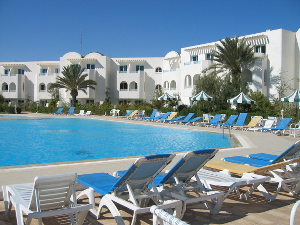
If you are staying in a hotel with a thermostat in the room make sure you use it effectively. Here are some tips to save energy in your hotel room:
- Don’t have the windows open and the air conditioning/heating on at the same time
- Only have the air conditioning or heating on when it is needed
- Turning the air conditioning up will not make the room cool down any faster, be patient!
- If you are staying in a hotel that offers cleaning services, don’t put towels and bedding out every day to be washed unless necessary. This will reduce the energy used in washing, drying and ironing processes and so reduce carbon emissions.
Refuse, Reuse, Recycle
Say no to straws - straws are one of the most avoidable single use plastics, simply ask to not have a straw with your drink at the hotel bar. This is a very easy way to immediately reduce your plastic waste, within minimal effort.
Refuse plastic souvenir bags - instead use your own back packs/ handbags or bags for life to carry those precious holiday souvenirs.
Reuse plastic water bottles - in some countries the tap water is not drinkable so you can't avoid buying plastic bottled water. If you have to, try and buy bigger bottles that you can distil into smaller non plastic water bottles. And try asking for the hotel bar to re-fill your water bottles instead of buying new plastic ones. Always try and recycle your plastic water bottles before you leave.
Reuse plastic toiletries - when packing lightly, using travel sized miniature toiletries comes in handy. You can distil your larger bottles of shampoo and shower gel etc. into the smaller bottles. Make sure to keep reusing them for all of your trips.
Eco-Friendly Suncreen
The US have banned the production and sale of cosmetics products containing microbeads but you may not know that this only refers to rinse off products, so that leave on products such as sunscreen are not included. Sunscreens can further harm the environment as they often contain Oxybenzone which has been found to contribute to coral bleaching which kill corals and is toxic to other marine life, such as algae, fish and mammals. Fortunately, there are eco alternatives available to help you protect your skin and marine life. Before you go swimming in the ocean, check that your sunscreen is coral reef safe and that it does not contain plastic microbeads.
Before You Leave Home
Before you leave to go on your vacation be sure that you are not wasting electricity and gas by leaving unnecessary equipment on when you are away. Here are some tips for reducing energy:
- By turning your heating down when you are away by just 1oC you can save 8% on your energy consumption.
- If you need to leave lights on for security reasons invest in timers which can turn the lights on at appropriate times.
- If your fridge is empty before you go on holiday, make sure you turn it off.
- Unplug all electrical equipment as appliances still consume energy when they are on standby.
More on Energy Savings in the home
